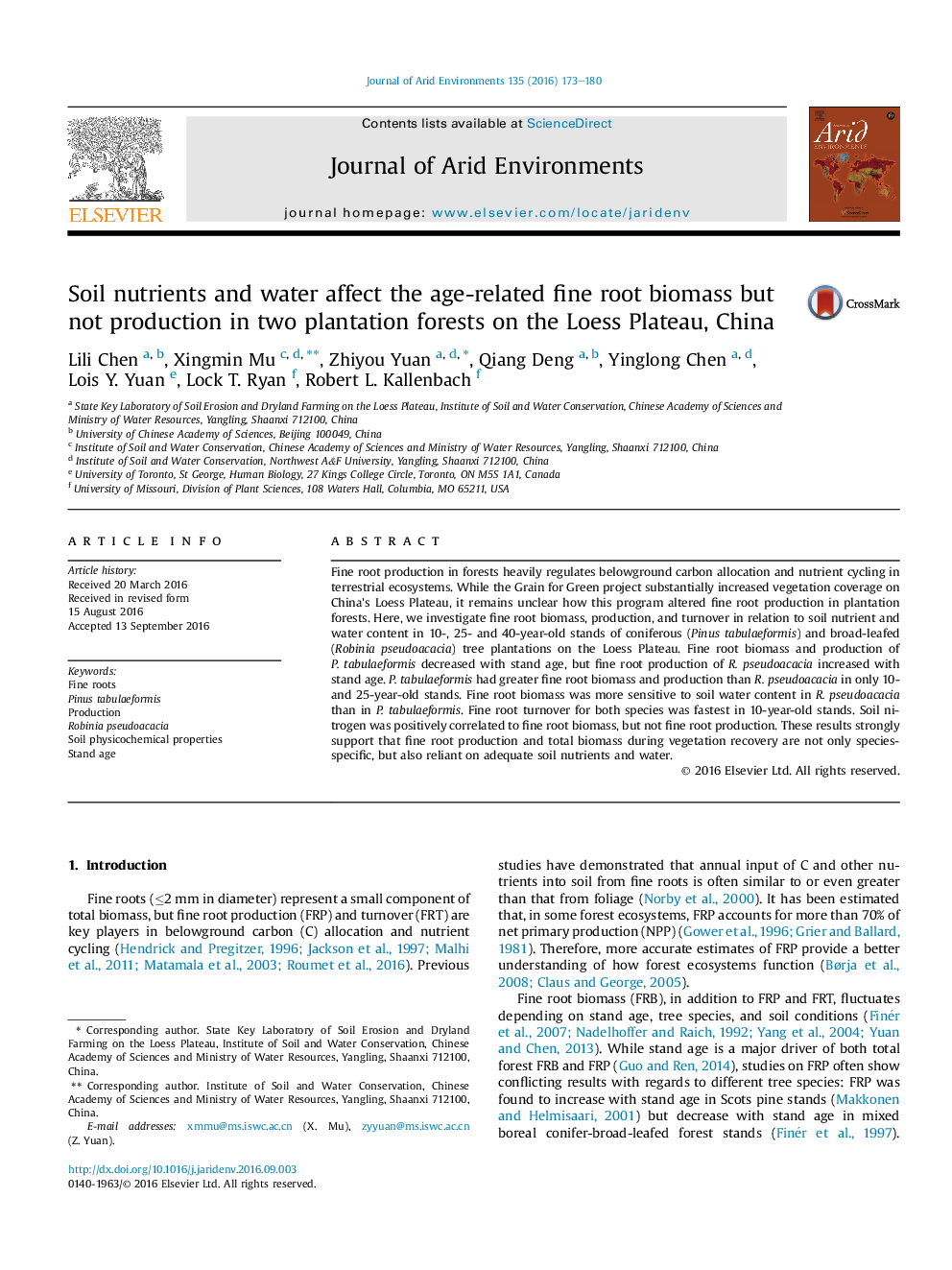| Article ID | Journal | Published Year | Pages | File Type |
|---|---|---|---|---|
| 4392684 | Journal of Arid Environments | 2016 | 8 Pages |
•FRB and FRP of P. tabulaeformis were in order of 10 yr > 25 yr > 40 yr, in contrast with those of R. pseudoacacia.•Soil nitrogen had significant positive effects on FRB.•FRB of R. pseudoacacia was more sensitive to soil water in the arid and semiarid Loess Plateau.
Fine root production in forests heavily regulates belowground carbon allocation and nutrient cycling in terrestrial ecosystems. While the Grain for Green project substantially increased vegetation coverage on China's Loess Plateau, it remains unclear how this program altered fine root production in plantation forests. Here, we investigate fine root biomass, production, and turnover in relation to soil nutrient and water content in 10-, 25- and 40-year-old stands of coniferous (Pinus tabulaeformis) and broad-leafed (Robinia pseudoacacia) tree plantations on the Loess Plateau. Fine root biomass and production of P. tabulaeformis decreased with stand age, but fine root production of R. pseudoacacia increased with stand age. P. tabulaeformis had greater fine root biomass and production than R. pseudoacacia in only 10- and 25-year-old stands. Fine root biomass was more sensitive to soil water content in R. pseudoacacia than in P. tabulaeformis. Fine root turnover for both species was fastest in 10-year-old stands. Soil nitrogen was positively correlated to fine root biomass, but not fine root production. These results strongly support that fine root production and total biomass during vegetation recovery are not only species-specific, but also reliant on adequate soil nutrients and water.
